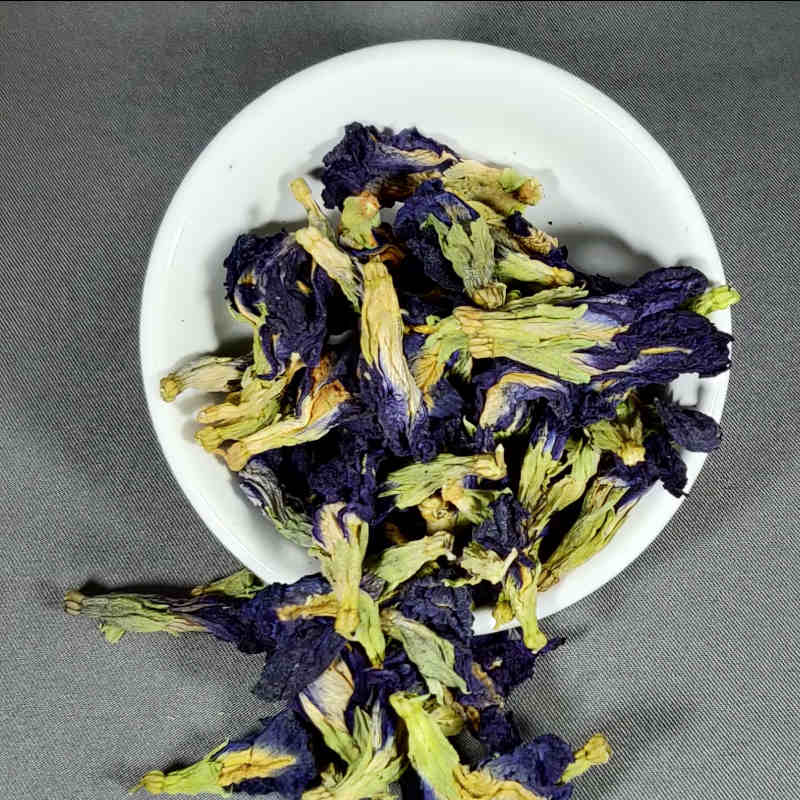Additional Information:
Butterfly pea flowers, scientifically known as Clitoria ternatea, have a rich history rooted in traditional medicine and culinary practices, particularly in Southeast Asia. For centuries, these vibrant blue flowers have been used in countries like Thailand, Malaysia, and Indonesia for their striking color and perceived health benefits. In traditional Ayurvedic medicine, butterfly pea flowers have been valued for their potential to enhance cognitive function, reduce stress, and promote overall well-being. The flowers are often brewed into a tea that not only offers a calming effect but also serves as a natural remedy for various ailments.
In addition to their medicinal uses, butterfly pea flowers have gained popularity in contemporary culinary arts as a natural food coloring. Their vivid hue makes them a favorite for enhancing the visual appeal of dishes and beverages, such as rice, cocktails, and desserts. When combined with acidic ingredients like lemon juice, the flowers change color, creating an engaging sensory experience. Beyond aesthetics, the flowers are celebrated for their antioxidant properties, making them a trendy ingredient in health-conscious recipes and herbal teas. As awareness of their versatility spreads, butterfly pea flowers continue to find their place in both traditional and modern practices.
Butterfly pea flowers are often associated with various magical and mystical properties, particularly in folk traditions and spiritual practices. Revered for their vibrant blue color, they are thought to symbolize transformation and clarity, making them a popular choice in rituals aimed at enhancing intuition and mental clarity. In some cultures, the flowers are used in spells and potions for protection, love, and communication, believed to promote harmony and understanding in relationships. Additionally, their ability to change color when exposed to different pH levels adds an enchanting element, often seen as a metaphor for adaptability and the transformative nature of life. Whether used in magical practices or simply appreciated for their beauty, butterfly pea flowers carry a sense of wonder that captivates many.
Warnings and Considerations
- Allergic Reactions: Some individuals may experience allergic reactions to butterfly pea flowers. If you have allergies to other plants in the Fabaceae family, use caution.
- Pregnancy and Breastfeeding: Limited research is available on the safety of butterfly pea flowers during pregnancy and breastfeeding. Consult a healthcare provider before use.
- Blood Pressure Effects: Butterfly pea may lower blood pressure, so those with hypotension or on antihypertensive medications should monitor their levels closely.
- Drug Interactions: It may interact with certain medications. Always consult a healthcare provider if you are taking other medications.
- Not a Substitute for Medical Treatment: While butterfly pea flowers offer various health benefits, they should not replace prescribed medications or treatments for serious health conditions.
As always, consult with a healthcare professional before starting any new herbal remedies, especially if you have existing health concerns or are taking medications.

Reviews
There are no reviews yet.